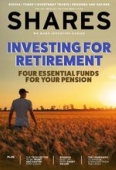Archived article
Please note that tax, investment, pension and ISA rules can change and the information and any views contained in this article may now be inaccurate.
Removing currency risk on overseas-focused ETFs

When looking to invest in a certain region like the US, Japan or the Eurozone, exchange-traded funds (ETFs) can be a very
useful tool.
They give you a broad and cost efficient exposure to the country’s stock market which helps capture a decent amount of the upside, and also offers the benefit of diversification to potentially mitigate on the downside.
But one important aspect to always consider when investing in ETFs which track companies abroad is currency.
For example, if you want to get exposure to companies in Japan but not the Japanese yen, or you don’t want the additional worry of having to consider how the yen will do against the pound and vice versa, then choosing a currency hedged ETF would eliminate this risk.
Most ETFs which offer exposure to foreign markets will have a ‘GBP hedged’ share class.
PROS AND CONS
Currency hedged ETFs and their non-hedged counterparts use the same asset allocation, but the difference is that currency-hedged ETFs typically use forward exchange contracts to protect against exchange rate fluctuations.
This means currency hedged ETFs cost more. Take iShares S&P 500 (IUSA) as an example. This is the US dollar share class and has an ongoing charge of 0.07% a year. The currency hedged ETF, iShares S&P 500 GBP Hedged (IGUS), has an ongoing charge
of 0.2% a year.
That’s because of the extra costs involved. Currency hedged ETFs have increased transaction and holding costs, while there is also a spread incurred when pairs of currencies are traded. The rule of thumb is that currency hedged ETFs tend to be between 0.1% to 0.3% more expensive.
Also worth considering is that the money in these hedged share classes tends to be smaller. The unhedged iShares S&P 500 ETF has $8.9bn of investors’ money while the GBP hedged ETF is 94% smaller with £475m in assets.
That means the difference between the price at which you buy and sell the ETF (bid/offer spread), always worth taking into account when looking to buy or sell ETFs, could be wider than the unhedged one. For the above ETF it doesn’t make much difference as £475m is still a decent amount in assets, but for currency hedged ETFs with less than £100m for example the bid/offer spread could be an significant additional cost.
On the flip side, while not affecting your total return it is also worth considering that foreign currency-denominated shares and ETFs can incur higher trading costs from your broker.
For investors with shorter time horizons, like those nearing retirement who might need the money in five years, such ETFs can be the better option as they reduce the additional volatility associated with currency.
Many in the finance world believe currency fluctuations aren’t a factor in long term investment returns (positive or negative), but over the shorter term they can make a difference.
HOW IT CAN WORK IN PRACTICE
A great example highlighted by JustETF Research shows the difference between a US-listed ETF iShares MSCI Japan, denominated in yen and iShares MSCI Japan GBP Hedged (IJPH).
2013 was a phenomenal year for Japanese equities, as prime minister Shinzo Abe launched an ambitious turnaround plan to get the world’s then third largest economy out of stagnation, in a three-pronged approach dubbed ‘Abenomics’ by investors.
The glut of money unleashed by quantitative easing did wonders for the stock market, in part because it helped weaken the yen and boost an economy and stock market full of exporters. The benchmark Nikkei 225 index rose a staggering 56.7% that year.
Despite the surging stock markets, ETF investors who didn’t keep an eye on the currency risk would’ve missed out substantially.
In 2013, the iShares MSCI Japan ETF in local currency rose 21%, which is still impressive but was hampered by the weakened yen. The GBP hedged ETF however, removing the risk of a weaker yen, returned 48%.
WHAT HAPPENED NEXT?
However, 2013 proved to be the high watermark for Abenomics as the next five years showed. Returns the very next year from the MSCI Japan index were -3.72%, and as the quantitative easing taps were turned off Abenomics began to run out of steam.
That was good news for the yen, which has strengthened significantly in the years since, but meant those either betting against the yen or hedged currency risk altogether missed out on some fairly substantial gains.
In the period between 2014 and 2019, the MSCI Japan ETF in local currency returned 47% over the five years. The GBP hedged version returned 20%.
In hindsight it’s easy to say that Abenomics would run out of steam and the yen would strengthen, but predicting currency moves can be a difficult thing to do.
For those prepared to take a view on currency or happy to ride out fluctuations in foreign exchange over the long term, currency hedged products may not be worth looking at.
However for anyone who merely wants overseas exposure without any added complications, a currency hedged ETF can at least mean one less thing to worry about.
Important information:
These articles are provided by Shares magazine which is published by AJ Bell Media, a part of AJ Bell. Shares is not written by AJ Bell.
Shares is provided for your general information and use and is not a personal recommendation to invest. It is not intended to be relied upon by you in making or not making any investment decisions. The investments referred to in these articles will not be suitable for all investors. If in doubt please seek appropriate independent financial advice.
Investors acting on the information in these articles do so at their own risk and AJ Bell Media and its staff do not accept liability for losses suffered by investors as a result of their investment decisions.

 magazine
magazine









